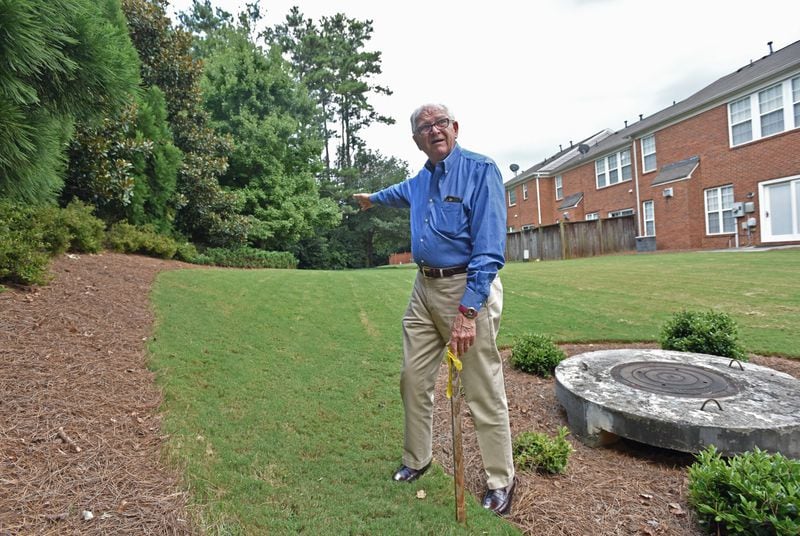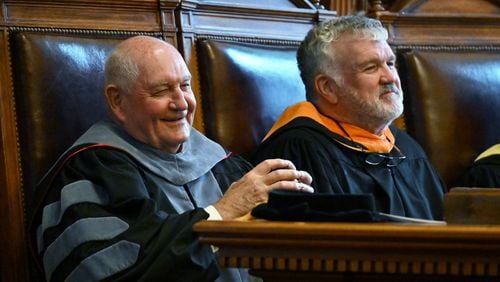Nancy Williams wants to know why parking spaces are more valuable to the city of Milton than her peace of mind.
When Ga. 9 is widened beginning next year, the work will wipe out 15 feet of trees and other landscaping that sit between her house and the road, she said. The better plan, she and many of her neighbors in the Orchards of Windward subdivision say, is to take the needed land from the parking lots of shopping centers across the street.
Better still, they say, leave the area alone.
Williams and others fear adding two more lanes to Ga. 9 — plus multi-use trails, to be used by bikers or pedestrians — will bring more traffic and more urbanization. So they’ve gone to the state Department of Transportation and the city, pleading for some concessions in the hope they can mitigate the project’s impact on their way of life.
When Williams came to Milton a year and a half ago from Alpharetta, it wasn't to live on a busy street. Like thousands of others who have moved there in recent years, she came because Milton strives to respect its rural heritage — or so the city's vision statement declares.
“I was thinking it would be quieter, less traffic, less noise,” Williams said. “I’m going to be looking at a highway, at pedestrians, at four lanes of traffic instead of two. The noise levels are going to be outrageous.”
But Milton officials say the widening is necessary because many of the city’s residents want alternative ways to get around.
Still, Mayor Joe Lockwood has heard residents’ concerns.
“The city will do everything possible, within reason and benefit to our citizens as a whole, to lessen the impact to our Hwy 9 border residents,” he said in an email to those opposed to the project.
Shannon Ferguson, a Milton spokesperson, said Milton residents, through surveys, have said they want more walking, biking and hiking trails — something that was confirmed this year as part of an update to the recreation master plan.
Lockwood was not available for comment on the project but in his Aug. 24 email, he said city staffers will continue to talk to the Georgia Department of Transportation about the project.
Resident Ike Yancy has a solution. Just eliminate the multi-use trails on his side of the road. Make them smaller on the other side. Without the 10-foot wide trails, maybe the trees can stay.
Yancy, the president of the Regency at Windward Square development down the road from the Orchards of Windward, is leading the opposition to the project. More than a dozen neighbors agreed: They rarely see cyclists, or even pedestrians, on the 5-foot sidewalk that currently exists. Well, except when the track team comes through.
Natalie Dale, a GDOT spokesperson, said it’s the city of Milton that’s requiring the wide bike and pedestrian trails, not GDOT.
“The city also has a responsibility to maximize access and mobility for all the residents, businesses, schools and churches located along this road section,” Ferguson said in an email, explaining that the trails will allow more people to use the roadway.
The 16.9-mile road will be expanded from Cumming to Alpharetta, and the 3.1-mile Milton portion will cost $31.5 million. Dale said that, when a road has average daily traffic of 18,000 cars a day, it’s ready to have four lanes instead of two. In 2016, the average daily volume was 21,000 vehicles. And with a 19 percent population increase in the city since 2010 — Milton has nearly 40,000 residents, according to Census estimates — it’s likely even higher now. When the widened road opens in 2022, Dale said the projected daily traffic is almost 25,000 vehicles.
“The population is here. The cars are here,” Dale said. “There are a lot of people in favor of this project. They just aren’t as vocal.”
Dale said GDOT has addressed neighbors’ concerns, even it it’s “not always the answer they want in the end.” Homeowners associations that lose landscaping will be compensated for what is torn down, she said. Yancy countered that with the state taking 15 feet of land in his neighborhood, there won’t be room to plant anything new. His berm is about 25 feet wide, and the townhouses that back up to the road won’t have as much of a buffer as they once did.
But the road was shifted to avoid tearing down eight homes in a senior community — one that was built after road planning had begun, Dale noted. Simply moving the road over, or taking away parking spaces, can’t happen, she said. Not only are there requirements for how many parking spaces retailers have, but the path of the road can’t zig and zag to accommodate differing neighborhoods’ needs. One shift reverberates down the literal road, and leaving more greenspace in one area would lead to having to take homes down later. Additionally, Dale said, wetlands in the area help dictate where the road can go.
That’s of little comfort to residents like Claire Dravis, who moved from Canton to Milton eight months ago. Now, she said, she fears the road will be so close that a car will come into her sun room. It will be 44 feet, she said, from her bedroom window to the edge of the multi-use trail. Jeff Zell, another neighbor, said he almost didn’t buy his townhouse 14 years ago because of its proximity to the highway. Now, he said, he feels “duped.”
Residents are also concerned that the median will make it harder for emergency vehicles to respond to calls in the area. And they are mad, most of all, that Milton continues to allow the development that leads to this level of traffic, and the need for wider roads.
“We all moved here to stay away from that,” Williams said.
About the Author








